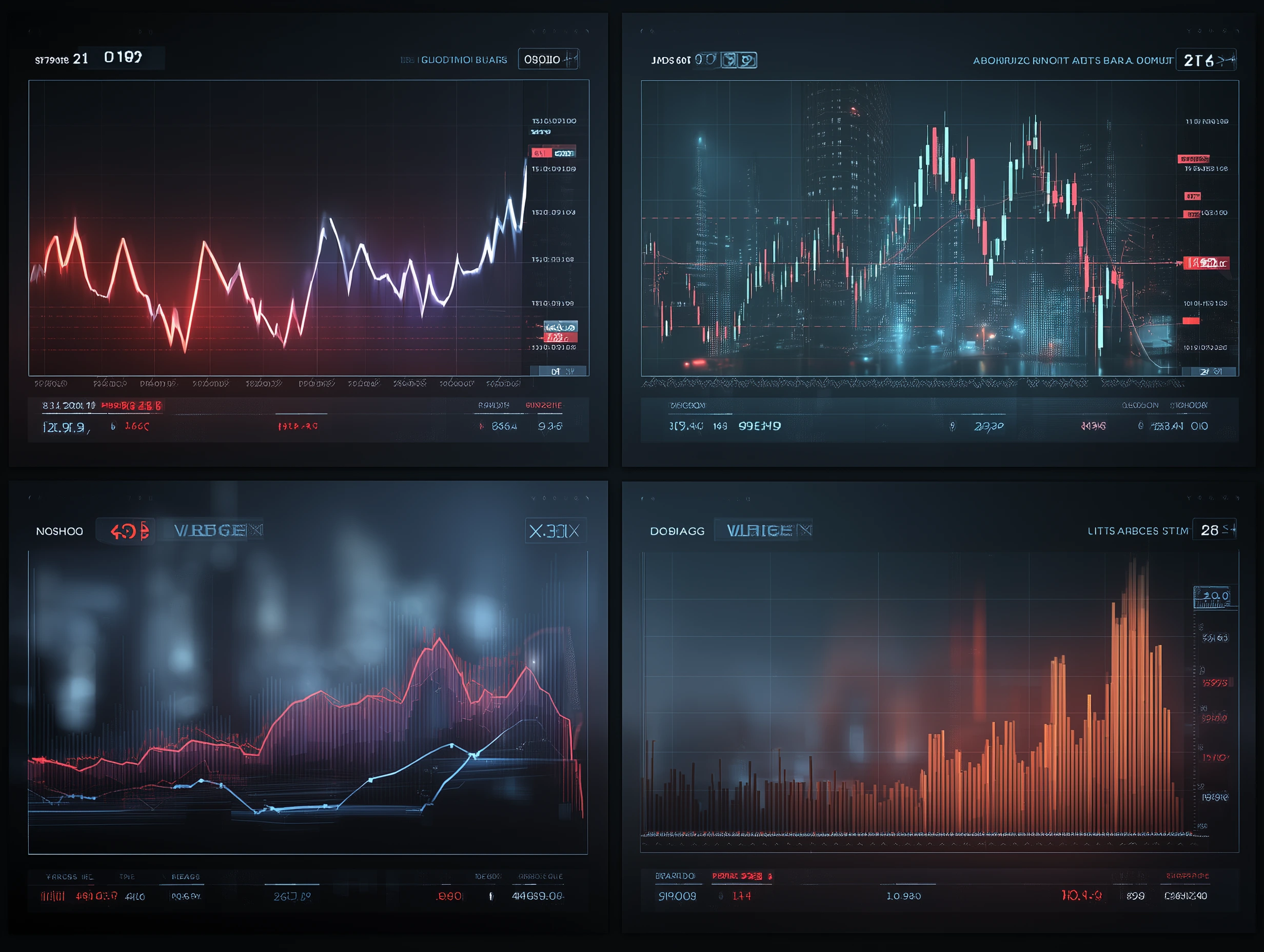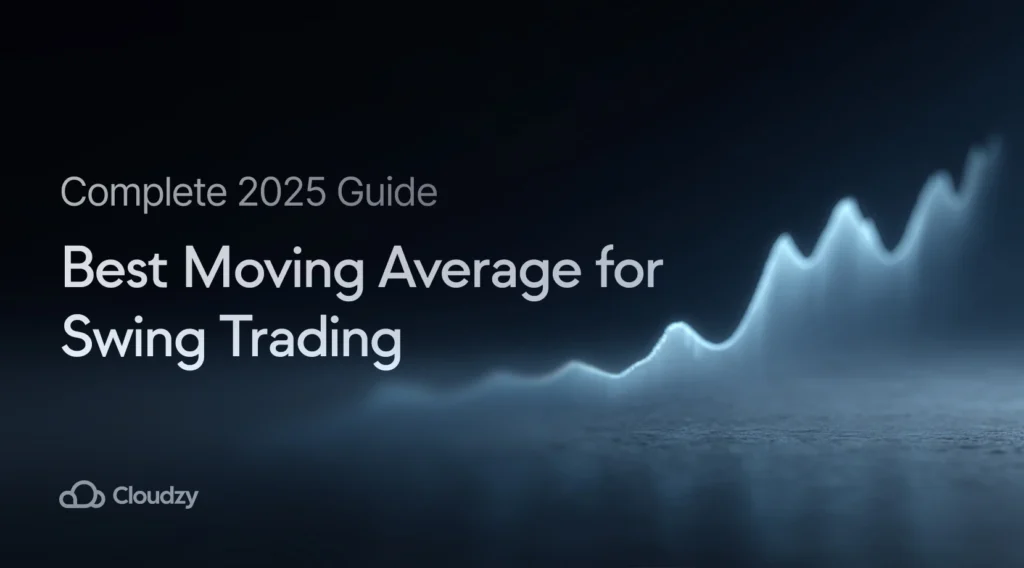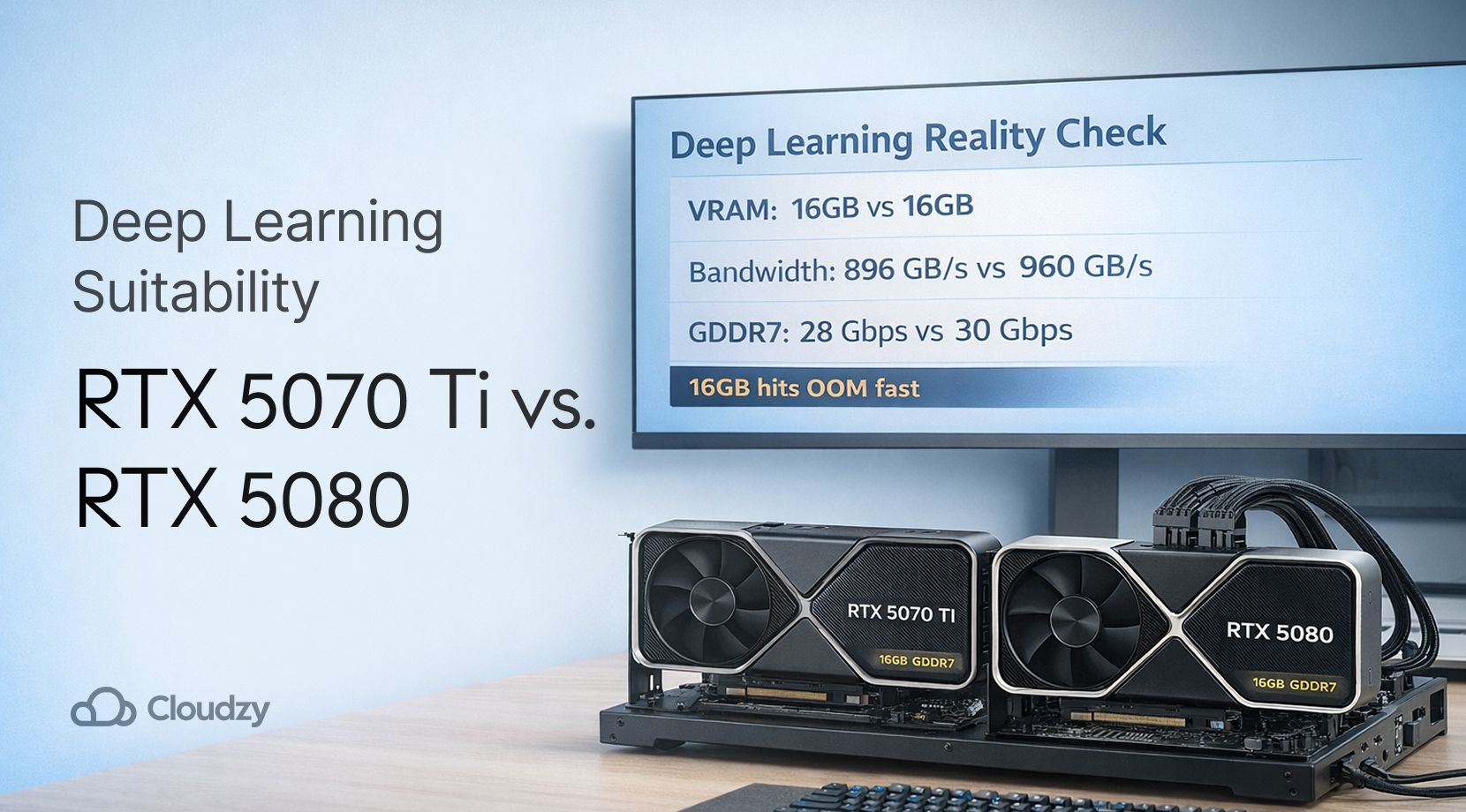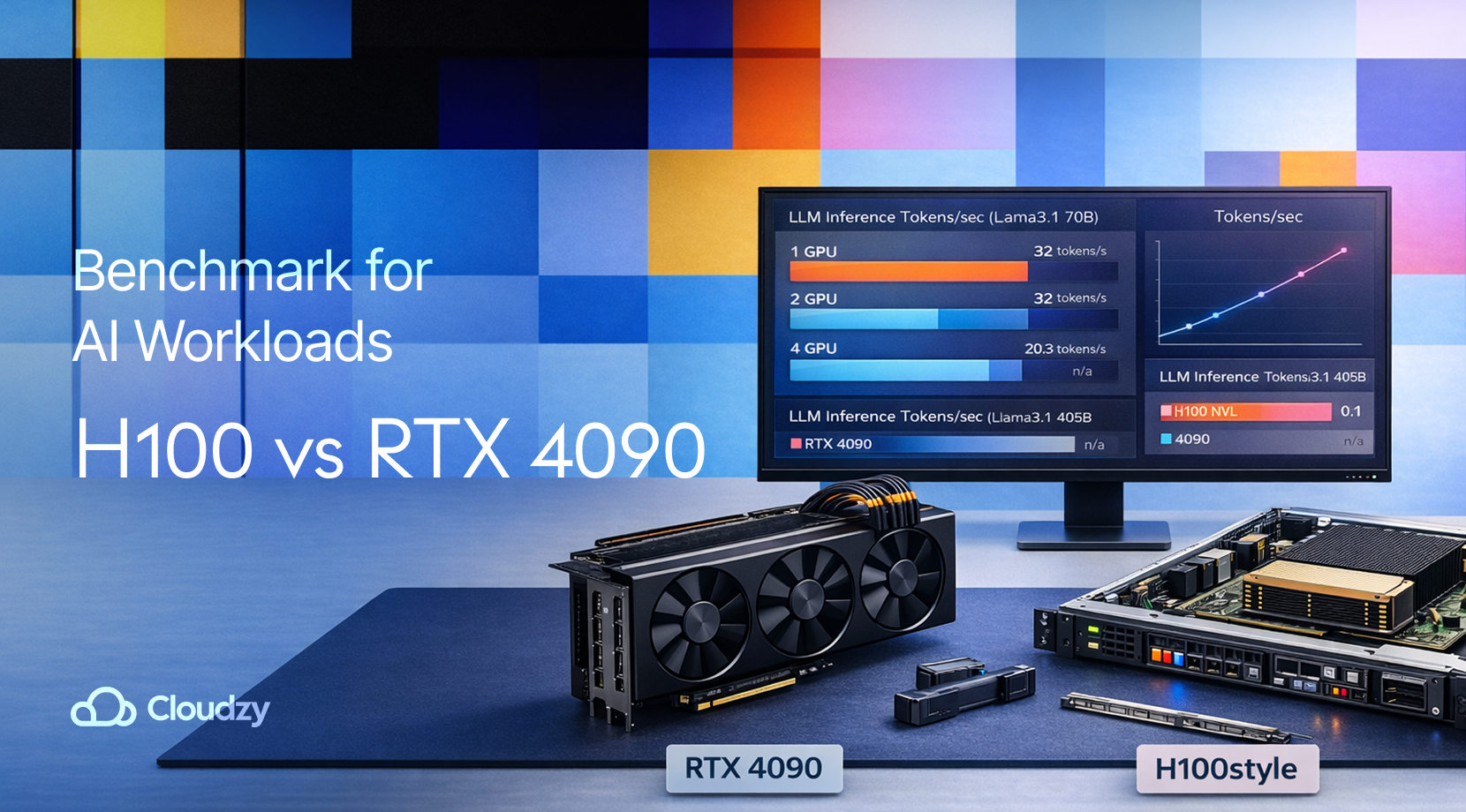Here’s the thing—after testing dozens of moving averages across different market conditions, the 21-period EMA consistently outperforms others for swing trading. It responds faster than SMAs while filtering out the noise that shorter periods create. Most traders overthink this choice, but the math is straightforward: 21 periods capture about a month of trading data, which aligns perfectly with swing trading’s 3-10 day holding periods.
Moving averages aren’t magic bullets. They’re price smoothing tools that help you see trends without getting distracted by every little wiggle. The right one can mean catching a profitable swing instead of getting chopped up by false signals.
TL;DR Summary
- 21-period EMA: Most reliable for typical swing trades
- 50-day moving average: Works for longer swing positions
- EMA vs SMA: EMA’s faster, SMA’s smoother—pick based on your style
- Crossovers: Golden cross and death cross provide clear entry/exit signals
- Combine with RSI: Double-check momentum before entering trades
Why Moving Averages Matter in Swing Trading

Look, I’ve seen traders blow accounts trying to catch every market move. Moving averages act as your trading compass—they show market direction confirmation without the emotional baggage of watching every tick.
Price Smoothing vs Signal Speed
Think of it this way: raw price data is like trying to navigate using a shaky compass. Moving averages steady that compass, but there’s always a trade-off between smoothness and speed.
I learned this the hard way during several trades where the 21-EMA caught trend changes days before the 21-SMA signaled. This timing difference can save 3-5% per share on swing trades—substantial money when you’re trading significant positions.
The key insight? EMAs weight recent prices more heavily. When stocks reverse direction, the EMA recognizes the change immediately while the SMA keeps lagging for additional days.
Market Direction Confirmation
Here’s where most best trading indicators tutorials get it wrong—they focus on signals instead of context. Moving averages excel at showing you which way the wind’s blowing, especially during choppy markets when you can’t trust individual candles.
SMA vs. EMA: Which Type Works Best for Swing Trading?

Simple Moving Averages (SMAs) give equal weight to all data points in the calculation, making them smoother and better for identifying broader trends. They’re like that reliable friend who takes forever to change their mind.
Exponential Moving Averages (EMAs) prioritize recent price data, making them more responsive to recent price changes. They’re more like your impulsive friend who reacts to everything immediately—useful in fast-moving markets for spotting potential reversals quickly.
Real example: During volatile market conditions, I’ve tracked both 21-EMA and 21-SMA signals on the same stock. The EMA typically catches breakouts 1-2 days earlier than the SMA, but during consolidation periods, that same EMA can generate multiple false signals while the SMA keeps traders out of trouble.
EMA vs SMA for swing trading really depends on what you can stomach. EMAs get you in early but fake you out more often. SMAs are steadier but you’ll miss some moves.
| Aspect | SMA | EMA |
| Response Speed | Slower | Faster |
| False Signals | Fewer | More |
| Trend Changes | Delayed | Early Detection |
| Best For | Stable Markets | Volatile Markets |
The exponential moving average strategy adapts faster to changing conditions, but that’s not always better. Your choice depends on your individual trading style and preferred timeframes—there’s no universal “best” answer.
Top Moving Averages for Swing Traders in 2025

Different moving average periods serve different purposes in swing trading. The key is matching the right period to your specific strategy and market conditions.
20-Period Moving Average (Short-Term Momentum)
The 20-period MA works great for identifying short-term trends and momentum shifts. It’s particularly effective in fast-moving markets where you need quick entries and exits. Many day traders who occasionally swing trade love this period because it aligns with their faster pace.
21-Period EMA (My Personal Favorite)
After years of testing, the 21-period EMA hits that sweet spot between responsiveness and reliability. It catches trend changes without drowning you in false signals.
In practice, clean EMA breakouts with volume confirmation typically lead to strong moves lasting 5-10 days. The setup requires patience—volume confirmation, RSI showing strength, and a clear break above the EMA with follow-through.
50-Day Moving Average (The Institution’s Choice)
The 50-day moving average offers excellent balance between responsiveness and stability. Wall Street loves this one because it smooths out short-term fluctuations while still catching medium-term trends.
I’ve noticed that when major stocks hold above their 50-day MA during corrections, institutional buying often emerges. It’s like a line in the sand that big money respects.
This timeframe works perfectly with futures trading strategies that target intermediate-term moves rather than daily noise.
200-Day Moving Average (The Trend Filter)
The 200-day MA provides long-term perspective and acts as major support or resistance. While too sluggish for direct swing trading signals, it’s invaluable for determining overall market bias.
Simple rule: swing trade long above the 200-day MA, consider shorts below it. Not foolproof, but it keeps you aligned with the dominant trend.
Moving Average Crossovers for Entry & Exit

Crossover signals occur when faster moving averages cross above or below slower ones. These provide clear entry and exit points for swing trades.
Popular Moving Average Combinations
20-Day and 50-Day MAs: This combo helps identify medium-term trends. When the 20-day crosses above the 50-day, it often signals the start of a meaningful uptrend. I’ve found this works especially well in trending markets but generates too many whipsaws during consolidation.
20, 50, and 200 MAs: The trifecta setup. When all three align in the same direction (20 > 50 > 200 for uptrends), you’re looking at high-probability setups. Use this for your highest-conviction trades.
Golden Cross vs Death Cross Signals
Golden cross happens when shorter MAs cross above longer ones—usually bullish. Death cross is the opposite—typically bearish. The classic 50/200 crossover gets all the headlines, but for swing trading, focus on faster combinations like 21/50.
Moving average crossover swing strategy works best when combined with volume confirmation. A crossover on light volume? Skip it. Heavy volume? Pay attention.
Multiple Timeframe Analysis
Here’s something most traders miss: sync your MA signals across daily and 4-hour charts. When both timeframes show bullish alignment, your success rate jumps dramatically.
With 25% of total equities trading volume now coming from retail investors, these technical setups matter more than ever. When thousands of traders use similar signals, self-fulfilling prophecies become real.
Automated futures trading strategies depend on this multi-timeframe approach to filter out noise and focus on high-probability setups.
How to Combine Moving Averages with Other Indicators
Moving averages work best when combined with confirming indicators rather than used in isolation. Layer multiple signals for higher probability setups.
MA + RSI Confirmation
Swing trading with indicators gets powerful when you layer confirmations. My favorite combination: price bounces off the 21-EMA while RSI shows oversold conditions (below 30).
This setup works as a momentum filter—you’re buying strength, not catching falling knives. RSI confirms the bounce has legs while the MA provides the structural support level.
Volume Confirmation
Moving average signals become exponentially more reliable with volume confirmation. A breakout above the 21-EMA with double normal volume suggests institutional participation.
The best intraday strategy principles apply here: volume confirms price action, moving averages provide directional bias. Without volume, even the cleanest MA setup can fail.
Mistakes to Avoid When Using MAs in Swing Trading
I’ve made every mistake possible with moving averages, so learn from my pain:
- Analysis paralysis: I once used seven different MAs simultaneously. Terrible idea. Stick to 2-3 maximum
- Ignoring market context: Even perfect MA signals fail in strong counter-trends. The 2022 bear market taught me this lesson expensively
- Forgetting lag: MAs are lagging indicators—they tell you what happened, not what’s coming. Use them for context, not prediction
- Wrong timeframe expectations: Crypto needs different MA periods than blue-chip stocks. Bitcoin’s volatility makes 14-period EMAs more useful than 21-period ones
Remember, there’s no single best moving average for swing trading that works in all conditions. Market volatility, asset class, and your personal risk tolerance all matter.
Real-Time Charting + VPS = Faster Execution
Execution speed becomes critical when trading moving average signals. Every millisecond can impact your entry and exit prices.
Why Execution Speed Matters in MA Trading
Research shows that trimming latency by 1ms can improve trade prices by 0.1%—and that compounds over thousands of trades. When your 21-EMA signals a breakout, every millisecond counts.
During volatile market events, execution delays become costly. A 3-second delay during major market moves can turn profitable MA signals into losses. That’s real money on significant positions.
VPS Advantage for Moving Average Strategies
A NinjaTrader VPS eliminates execution delays and provides 24/7 monitoring. Your MA alerts trigger instantly, regardless of your location or connection quality.
Professional traders using Forex VPS solutions report 40% fewer missed opportunities. The cloud-based setup ensures your moving average strategies execute flawlessly every time.
Give yourself a better chance at the Forex market by hosting your trading platform right next to your broker. Want to Improve your Trading?
Want to Improve your Trading?
Build Your MA-Based Swing Strategy
The 21-period EMA works best for most swing trading situations, but success depends on proper implementation. Combine it with volume confirmation, respect the broader trend, and maintain strict risk management.
Moving averages aren’t crystal balls—they’re probability tools. The most successful swing traders understand that more than 90% of active traders lose money, but proper education and systematic approach can put you in the profitable minority.
Start with the 21-EMA, add volume confirmation, and practice on paper before risking real money. The market will always be there, but your capital won’t if you’re careless.
Get a Bitcoin VPS, which lets you pay for your virtual server with Bitcoin and other major cryptocurrencies. Flexible, Secure Payment
Flexible, Secure Payment



